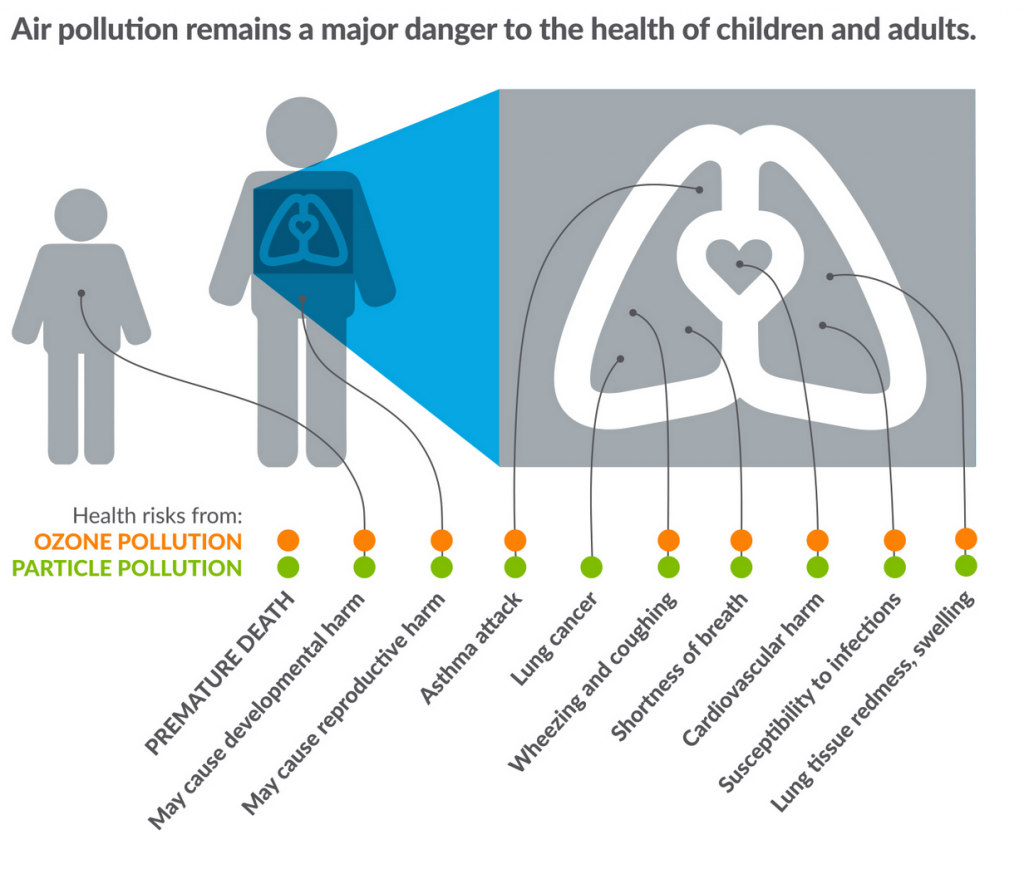https://www.youtube.com/watch?v=F3hLVhAQmNE
Ozone is a blue gas with a very pungent odor, and at ground-level ozone is an air pollutant that causes human health problems. It is a key ingredient of urban smog. Motor vehicle exhaust and industrial emissions, gasoline vapors, and chemical solvents are some of the major sources of NOx and VOC that help to form ozone. Sunlight and hot weather cause ground-level ozone to form in harmful concentrations in the air. Office products, such as copier machines, computers and printers may contribute significant levels of O3 to indoor environments.
Ground-level ozone is an air pollutant that is a key ingredient of urban smog. Motor vehicle exhaust and industrial emissions, gasoline vapors, and chemical solvents are some of the major sources of NOx and VOC that help to form ozone in the presence of UV light. Sunlight and hot weather cause ground-level ozone to form in harmful concentrations in the air. Office products (used in offices or homes), such as copier machines, computers, printers, electric motors and most electronics when they get hot may contribute significant levels of O3 to indoor environments. Some portable air cleaners may also produce irritating or unhealthy levels of O3.
When inhaled, even at very low levels, ozone can cause a broad range of respiratory problems.
Excessive ozone in the air can have a marked effect on human health. It can cause breathing problems, trigger asthma, reduce lung function and cause lung diseases. In Europe it is currently one of the air pollutants of most concern. Several European studies have reported that the daily mortality rises by 0.3% and that for heart diseases by 0.4%, per 10 µg/m3 increase in ozone exposure2.
Ozone can:
- cause acute respiratory problems;
- aggravate asthma;
- cause inflammation of lung tissue;
- impair the body’s immune system defenses, making people more susceptible to respiratory illnesses, including bronchitis and pneumonia.
- Children, older adults, and active people are most at risk from exposure to ozone.
- Asthmatics: Asthma is a growing threat to children and adults.
- Damage to lung tissue may be caused by repeated exposures to ozone — something like repeated sunburns of the lungs — and this could result in a reduced quality of life as people age. Results of animal studies indicate that repeated exposure to high levels of ozone for several months or more can produce permanent structural damage in the lungs.
Canadian Residential Guideline, 2010
Long-term [8 hour]: 40 µg/m3 (20 ppb)





